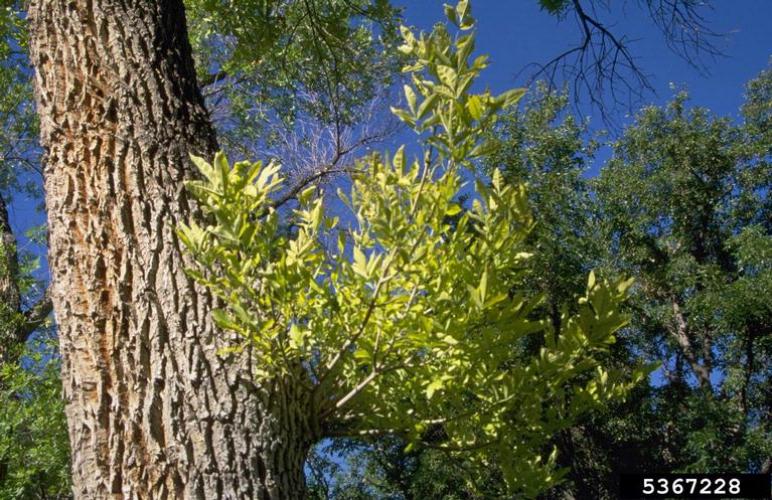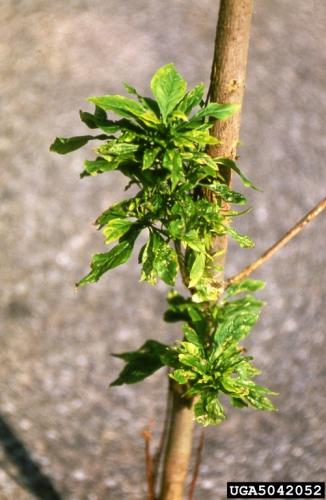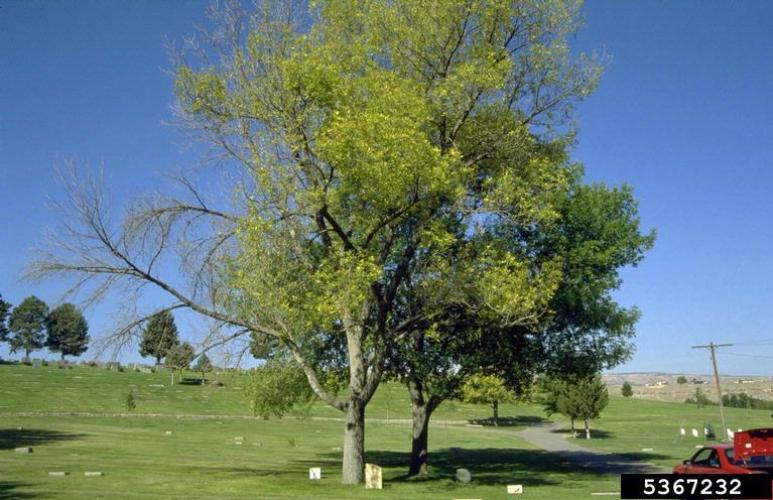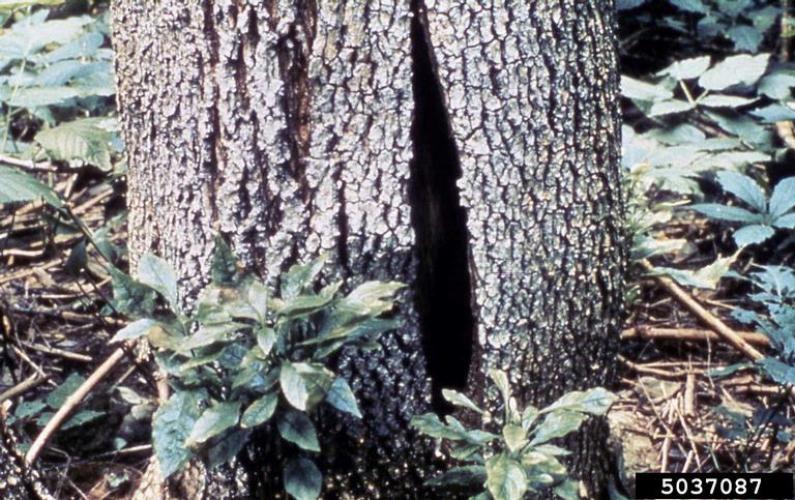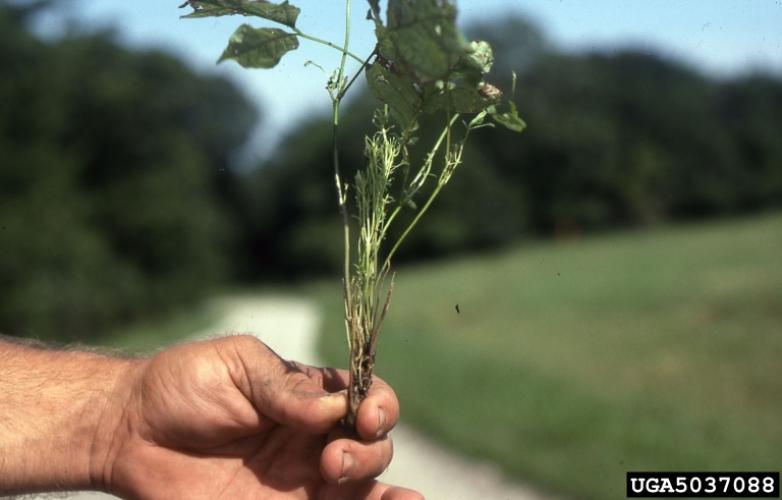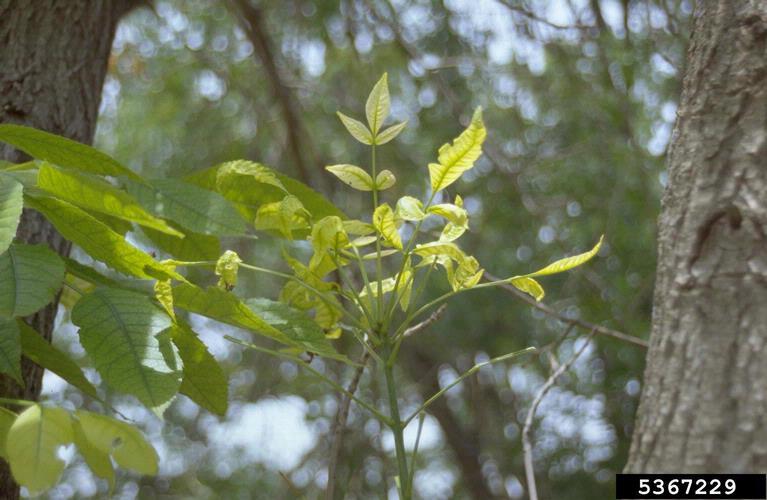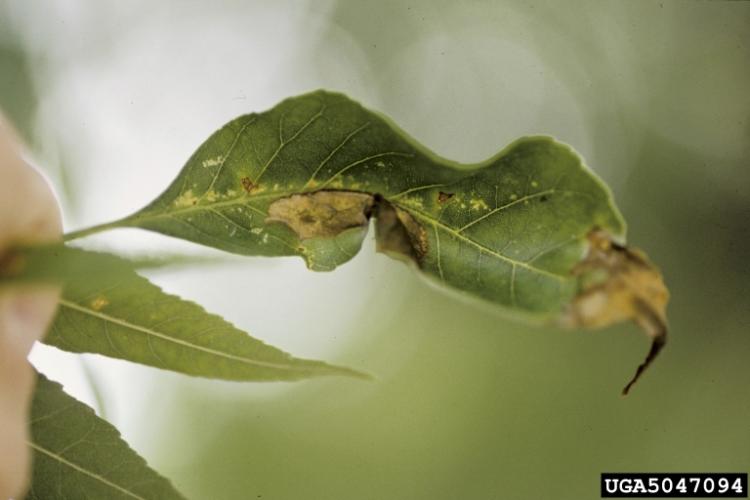Ash Yellows
Identification
Ash yellows is a disease is caused by Candidatus Phytoplasma fraxini, a microorganism thought to be transmitted to the host tree by leaf hopping insects.
signs and symptoms
- Decline in growth rate (gradual)
- Growth of witches’ brooms (Clusters of upright spindly shoots of leaves on lower trunk)
- Slow twig growth/short internodes (Causes foliage to tuft at the tips)
- Dieback
- Lack of leaf pigmentation (light green leaf color)
- Upturned leaf margins
- Premature autumn coloration
- Loss of dominant apical growth pattern
- Slow growth of lateral branches
- Vertical cracks and cankers near base of trunk
See images in slideshow above for signs and symptoms.
Identifying a stand of ash trees affected by ash yellows is difficult due to the similarity to symptoms caused by other environmental factors. The presence of witches’ brooms on suppressed ash saplings and stumps is an indicator that the disease is present, though not all infected trees will present this symptom. The impact of ash yellows can be exacerbated by environmental factors such as drought.
Biology
Origin
Candidatus Phytoplasma fraxini were first identified as causing the symptoms of ash yellows in 1971. The late identification was due to the difficulty of detecting these organisms, and the similarity of signs and symptoms to other environmental detriments to the tree such as drought, salt spray, poor soil quality, fungus, parasites etc. Ash yellows disease has only been identified in North America; its origin is otherwise unknown.
Life Cycle
The disease is caused by Candidatus Phytoplasma fraxini, a microorganism thought to be transmitted to the host tree by leaf hopping insects. The phytoplasma invades the phloem sieve tubes, a component of the tree’s vascular system.
Little else is known about the life cycle of Ash Yellows. This is due to the difficulty of diagnosis, lack of documentation and inability to replicate to phytoplasmas in the laboratory setting.
Ecological threat
The ash yellows disease causes the gradual decline of growth in a variety of ash tree species in North America. This disease affects twelve ash tree species, though it seems to affect the white ash species most severely. The impact on tree health varies. Some infected trees decline and die within 5-10 years. Others survive indefinitely, appearing healthy or showing only a loss in growth.
Vermont Distribution
Ash yellows has been confirmed in parts of Vermont.
Citations
Photo credit
Joseph OBrien, USDA Forest Service, Bugwood.org
USDA Forest Service - Forest Health Protection - St. Paul, USDA Forest Service, Bugwood.org
William Jacobi, Colorado State University, Bugwood.org
Information credit
USDA Forest Service Fact Sheet
Vermont Forest Health: Ash Management Guidance for Forest Managers
